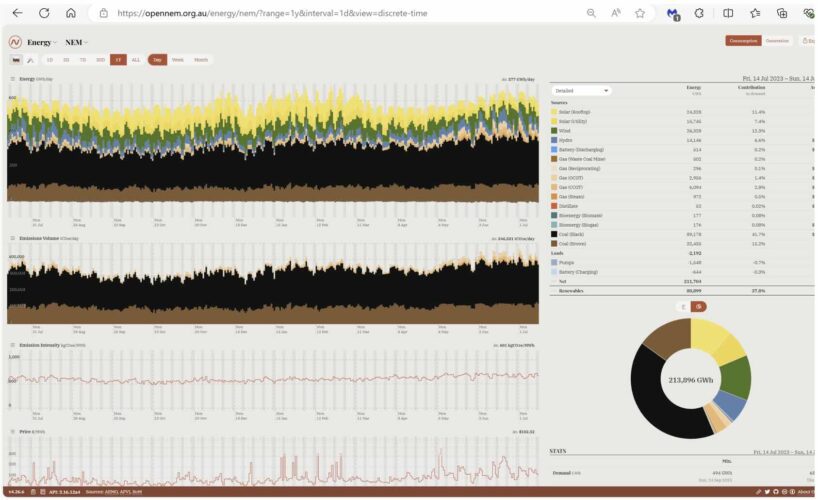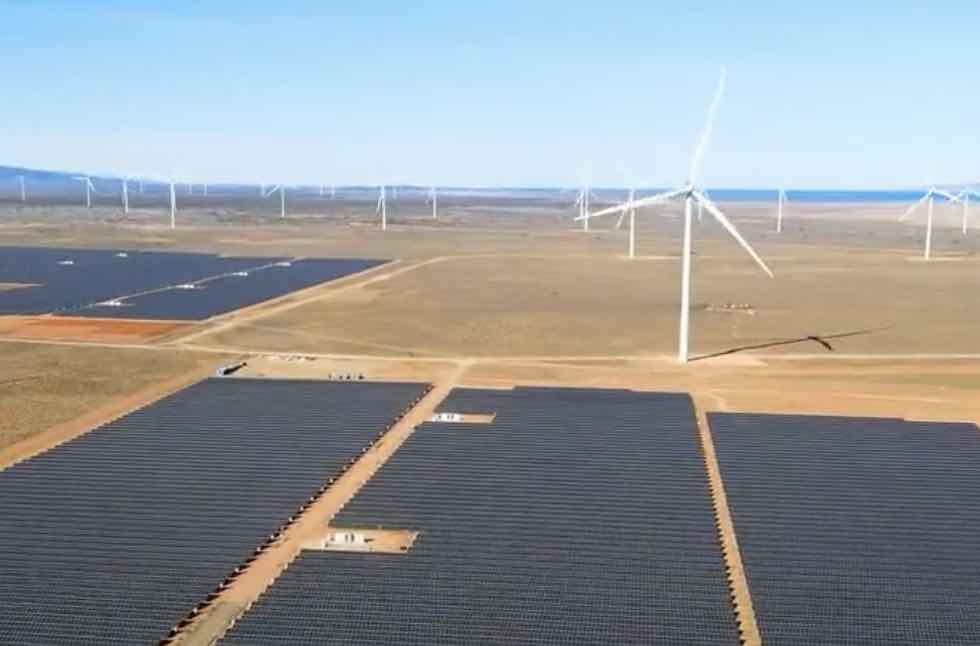Variable renewables cannot, by themselves, reliably supply all of our electricity and heat. But we can change our demand for energy supply through targeted energy efficiency and smart demand management.
The ISP focuses on electricity supply, so it does not effectively address gas-related factors such as the impact of efficient building electrification on electricity demand. Assumptions that electrification will dramatically increase electricity demand are risky.
A lot of gas technologies are far less efficient than many believe, and deliver heat at temperatures higher than processes actually require. And gas equipment can use significant amounts of electricity for fans, pumps, controls and other functions.
Electric fan heaters and other resistive electric heating options are much less efficient than a heat pump. A combination of an efficient building and heat pump technologies can reduce gas and electricity consumption.
The ISP should stop focusing so much on gas-fired electricity as the future gap filler. It should actively encourage development of other options that do not involve fossil gas, nor drive delays in emission reduction while we wait for technology development and cost reduction of some solutions. It should use a generic name such as ‘gap filling’ or ‘variable RE firming’ solutions’.
The ISP also should better recognise the significant uncertainties created by disruptive change. A well-resourced annual Demand-side Statement of Opportunities would help to build awareness of emerging technological and business model opportunities. One element of this uncertainty is the increasing interventions of governments through subsidies and incentives that reflect state and regional level circumstances.
But there is a real issue that can be addressed by multiple options.
We do need to better understand the factors that create a gap between solar and wind generation and demand – by addressing both demand and smart ways of generating and supplying energy to fill the remaining gaps.
South Australia, which often has high dependence on gas fired generation in extreme weather as shown in the graph below, could be a good pilot site for an integrated approach.

There are many alternatives to gas to fill gaps in supply from wind and solar.
For example, a recent IEEFA paper ( Optimising the ‘Battery of the Nation’ | IEEFA ) showed how a combination of building and appliance energy efficiency (to reduce summer and winter peak electricity demand and consumption), virtual transmission’ across Bass Strait and optimisation of management could allow Hydro Tasmania to hoard more stored water, then provide significant amounts of electricity to Victoria in extreme weather.
The Victorian government’s decision to fund a third of the capital cost of the Marinus cable shows that this potential has been recognised.
Heat pumps are improving in efficiency and delivering higher temperatures. Less efficient electric technologies such as electric boilers and induction metal melting can now compete with gas in industry when their comparative efficiency, flexibility and precision are factored in.
Demand management can help, but this can be tricky stuff. For example, electric vehicles offer potential to store and supply electricity. But over a multi-day dip in solar and wind generation, EVs are net consumers of electricity if they are driven. They can help with short term shortages, but they have their limits.
On the other hand, replacing an electric hot water service with a heat pump HWS saves enough electricity to run an EV driven average annual kilometres, though it has less capacity to suck in daytime ‘excess solar’ electricity in sunny weather.
Multi-fuel generators with fuel storage can play a useful role. We have many of these. When load factors are very low, using these existing generators, even with expensive renewable fuels, may be cheaper than new gas generators, while avoiding carbon emissions.
Figure 3 shows my analysis of NEM data for the past year from OpenNEM. Instead of showing electricity generation in Gigawatt-hours, it presents the output of solar and wind generation as percentages of total NEM generation on each day.
Solar’s lower and more variable winter share of generation is not just due to shorter, cloudier days. Our electricity consumption is higher in winter, especially in southern regions and on colder days. We use quite a bit of electricity to heat buildings and run fans and pumps for gas heating equipment.
Consumption for lighting and other activities also tends to increase due to shorter days, and behaviour changes. For example, households in Melbourne suburb Bayside, most of whom use gas, consume over 50 percent more electricity in mid-winter than in summer.
Wind complements solar, but a need to supplement their output remains. Demand profiles will change as we electrify, improve efficiency, drive demand management and energy storage of varying duration. As we switch from gas, winter electricity demand is expected to increase, though by how much is very uncertain, so the winter ‘solar gap’ may increase or be offset by growth in solar generation.

Figure 3a. Percentage of daily electricity generated provided by solar and wind generation.

Figure 3b. Screenshot of OpenNEM electricity generation for the same period (a day later) as the data for Figure 3a. This shows that winter solar generation is lower while demand for fossil fuel sourced generation is higher and summer solar generation is higher and total generation is similar to winter.
If we poorly manage electrification, our electricity demand will increase while utilisation of energy supply infrastructure will decline, increasing fixed electricity costs as we replace gas heating.
If we drive efficient electrification the outcome could be very different. Targeted commercial and residential building upgrades and appliance replacements can disproportionately cut gas use while also reducing peak demand and future electricity consumption.
Figure 34 below shows the distribution of gas bills in Victorian homes. Some industrial demand also has seasonal peaks, so targeted energy efficiency measures could also help. Clearly there are some big opportunities for savings. Retailers must be encouraged or regulated to act.
Combining upgrades of building thermal performance with a shift to electric heat pumps can cut heating energy requirements. As shown in Figure 5 for Victoria, upgrading a typical 2-star dwelling to 4 stars (well short of the now mandated 6-7-stars for new homes) would halve thermal energy requirements.
Combining this with replacement of gas ducted heating with split system heat pumps as well would cut overall end use heating energy requirements by 70-90%. Smaller capacity heating equipment would be required.

Figure 4. Distribution of Victorian household gas bills
Many commercial buildings use very inefficient gas systems for water and space heating. Their building envelopes are typically very inefficient and the heat/cooling distribution losses are often high.
Combining commercial building upgrades and efficient electrification can deliver substantial benefits. One recent example of an aquatic centre upgrade and electrification project saved $325,000 in gas bills in its first 10 months of operation.
The National Construction Code and the NABERS rating scheme focus on reducing annual energy and carbon emissions. Unfortunately, in most Australian climates this discourages building designs that minimise peak winter and summer efficiency.
This is because most Australian climates have substantial periods of moderate to cool weather when a thermally leaky building allows more internally generated heat and solar gain to leak from the building, reducing cooling energy requirements.
Overall, this often means a thermally worse building can gain a higher energy rating. Unfortunately, this approach leads to increased peak electricity (and gas if it is used for heating) demand and larger capacity, more expensive HVAC equipment.
Despite this issue, NABERS has demonstrated annual savings of 30 to 40% and, with the Green Building Council of Australia’s Green Star scheme and mandated Commercial Building Disclosure at time of lease for some categories of commercial buildings, has created a culture that focuses on energy efficiency and decarbonisation that is world-leading.
There are many emerging alternatives to fossil gas, some of which involve new models for gas. For example, off-grid pipes from landfills, sewage plants and regional digesters supplied by biomass wastes, potentially in regions that have not had access to reasonably priced gas in the past, could supply local industrial and large commercial sites.
For example, farm biomass waste quantities tend to peak at times when electricity use of harvesters and processors is high.
Farmers who face high network charges for metering across multiple meters could use portable storage to go off-grid for some activities.
This is an extract from a submission by Alan Pears, Senior Industry Fellow RMIT, Fellow University of Melbourne, Technical Leader Australian Alliance for Energy Productivity






